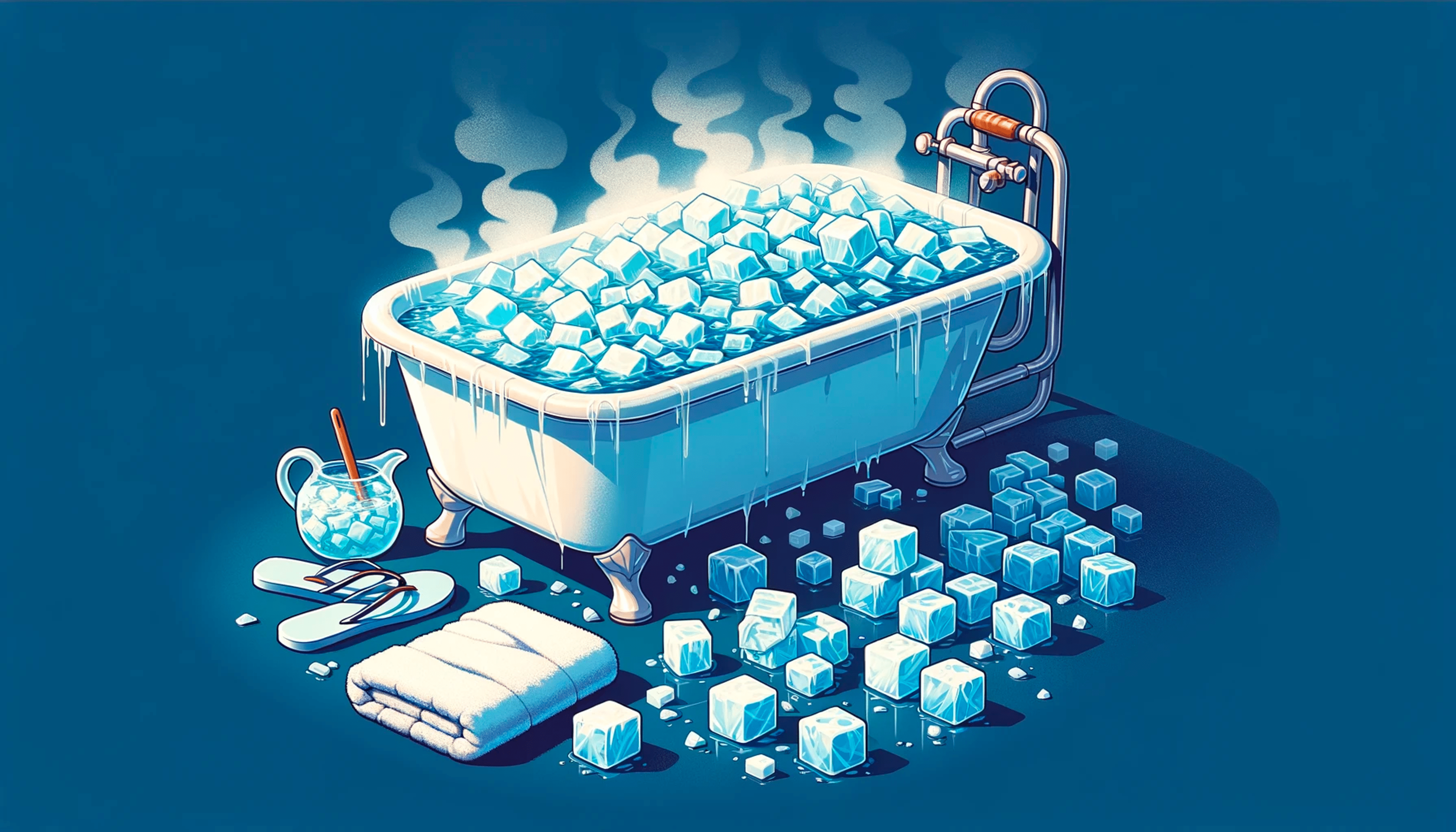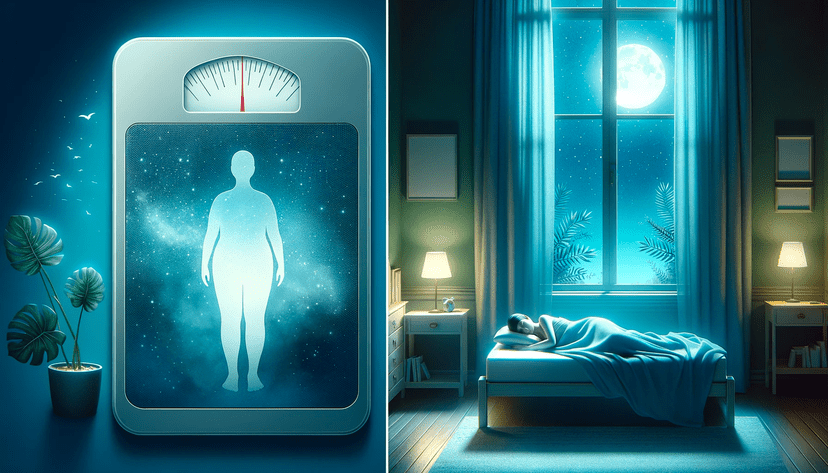The latest craze: Ice baths debunked

Understanding Ice Baths and Their Popularity
Ice baths, traditionally used by professional athletes as part of their recovery process, have recently caught the attention of the general public, rising to prominence in fitness and wellness communities. However, before diving into this cold water treatment, it's important to understand what it involves and the reasoning behind its increasing popularity.
Ice baths, otherwise known as cold-water immersion (CWI), involve soaking in a tub of ice-cold water for a certain amount of time, typically around 10 to 15 minutes.
This chilly practice has been popularized by a range of influential personalities, from celebrities to health gurus, and professional athletes swearing by its benefits. The growing awareness and promotion of holistic wellness routines, the influx of high-intensity workouts, and the desire for speedy recovery have all contributed to the uprise in popularity of ice baths.
The claimed benefits of ice baths range widely, with advocates insisting they aid in everything from muscle recovery and inflammation reduction to mood enhancement and improved sleep quality. Here's a deeper dive into some of these purported benefits:
- Muscle Recovery and Inflammation Reduction: Many believe that the cold temperature helps constrict blood vessels, flushing out toxins and metabolic waste from your muscles, making room for fresh oxygenated blood to aid in the recovery process.
- Mood Enhancement: Some users have reported a positive impact on their mental wellbeing, attributing this to the rush of endorphins - 'feel good' hormones - that the body releases in response to the cold.
- Improved Sleep Quality: The relief of muscle aches and relaxation potentially induced by ice baths may contribute to better sleep.
It's important to note that while these claims are widely circulated, scientific research offers varying results and opinions on the effectiveness of ice baths as a recovery or wellness tool. It's essential to approach this practice with caution and to consult with a health professional before incorporating it into your routine. We'll delve deeper into these findings in the next section. Stay chilled and read on!
Examining the Science Behind Ice Baths
A growing trend within the fitness community is the practice of immersing oneself in an ice bath, a chilly commitment to the belief it enhances recovery after strenuous exercise. But what does evidence say regarding the potential benefits of ice baths, and are they really effective in delivering on the promise of rapid recovery? Below, we probe deeper into the science to understand the effects of ice baths on muscle recovery, inflammation, and recovery time.
Research on Muscle Recovery and Soreness
A key claim behind the practice of ice bathing is the supposed alleviation of post-exercise muscle soreness and an enhancement of muscle recovery. According to a review of 17 studies by the Cochrane Database of Systematic Reviews, muscle soreness could potentially be alleviated with cold-water immersion. However, the researchers stressed that the evidence was of "low quality", conceding significant variability in the trials' design, metrics, and protocols, which collectively presented challenges in endorsing such practices outright.
Studies have further demonstrated that the use of ice baths could limit muscular adaptations to resistance training by potentially impeding the muscle recovery and rebuilding process. This suggests that while ice baths might provide a temporary relief from soreness, they might compromise the long-term development and strengthening of muscles, questioning the real utility of ice baths in a sustainable fitness regime.
Effects on Inflammation and Recovery Time
Ice baths have also been frequently championed for their perceived effects on reducing inflammation and shortening recovery times. Cold exposure, theoretically, reduces blood flow, thereby potentially reducing inflammation and swelling. Disappointingly, though, multiple randomized controlled trials reveal no significant advantage of cold-water immersion over active recovery methods in restorative markers like creatine kinase, a gauge of muscle damage, indicating such claims could be more placebo than reality.
Potential Risks and Downsides
Despite their popularity, ice baths are not without risks. The abrupt cold shock from immersion in freezing water induces substantial physiological stress. With repeated stress, the body may grow more resilient to this, yet the contention is whether such adaptation accrues any genuine health benefits.
Moreover, the potential risks associated with ice baths aren't insignificant. These include the danger of hypothermia, frostbite, and cardiovascular stress, especially in those with pre-existing heart conditions. The potential psychological deterrent of discomfort and dread associated with immersing oneself in freezing water should also not be overlooked.
In conclusion, while the lore of ice baths may offer temporary relief from muscle soreness for some individuals, the lack of robust, high-quality evidence supporting their routine use, together with potential risks, suggests they may not be the panacea for post-exercise recovery they are often touted to be. As with any health or fitness regimen, always consult with a professional before embarking on new practices.
Alternatives and Best Practices
For those who are seeking alternatives to the cold immersion of ice baths or simply want to make sure they are employing safest practices, this section aims to discuss a range of other options for recovery and wellness. While ice baths have become quite a trend in recent years, there are numerous other methods to facilitate body recovery. By employing a holistic approach that takes into consideration one's overall health and well-being, we can potentially discover methods of recovery that are both safer and more effective.
Safer Alternatives to Ice Baths
Before we discuss how to safely use ice baths, let's explore some safer, yet effective alternatives:
-
Heat treatments: Much like the extreme cold of ice baths, exposing your body to extreme heat (like steam rooms or saunas) can also have therapeutic benefits. Heat treatments can help increase blood flow and relax your muscles.
-
Massage: Often overlooked, a good quality massage
can do wonders to your worn-out muscles and overall fatigue. It not only aids in breaking up those stubborn knots in your body, but also improves blood flow, leading to efficient nutrient and oxygen transportation throughout the body.
-
Active recovery: This involves light, low-impact exercises such, as walking or gentle stretching. In contrast to passive methods of recovery like massage or heat treatments, active recovery involves keeping your body moving, albeit at a less intense pace.
-
Adequate sleep: Last but certainly not least, getting an adequate amount of sleep is crucial. Our bodies recover and regenerate the most while we’re sleeping, so ensuring you’re getting enough quality sleep should be a key part of your recovery process.
How to Safely Use Ice Baths
For those who choose to experiment with ice baths, it's crucial to do so safely:
-
Limit the exposure time: It's not necessary to be immersed in an ice bath for an extended period. Generally, 10 to 15 minutes should suffice. Extending this period can put unnecessary stress on the body and lead to adverse effects.
-
Avoid immersing your entire body: It's safer to limit the immersion to avoid shock and protect your vital organs. Therefore, immersing only up to your waist is advisable.
-
Use a thermometer: Monitor the water temperature. It should ideally be between 10-15 degrees Celsius (50-59 degrees Fahrenheit).
Incorporating a Holistic Approach to Recovery
Rather than depending solely on one recovery method, such as ice-bathing, a more holistic approach to recovery and wellness is recommended. This involves incorporating aspects of nutrition, mental well-being, and a balanced exercise program along with physical recovery methods. By adopting such a multipronged approach, we stand a better chance of achieving long-term health and fitness, as well as improved recovery times.
In summary, ice baths can be an effective recovery tool if used appropriately, but there are numerous safer and potentially more beneficial alternatives available. It's always important to consider your total wellness plan and consult a health professional before making significant changes to your routine.
In Summary
As we have covered, ice baths have recently gained much popularity, with proponents championing their potential benefits for muscle recovery, inflammation reduction, mood enhancement, and even improved sleep quality. However, the scientific research offers varying results and opinions, stressing the need for caution and consultation with a health professional before incorporating this practice into your routine.
While some studies suggest a potential for alleviating muscle soreness, they concurrently caution that its long-term impact on muscle development is questionable. The potential benefits towards reducing inflammation and shortening recovery times are also not conclusively proven and may not be substantially better than active recovery methods. Moreover, the associated risks with ice baths, such as cardiovascular stress, hypothermia, and frostbite, are significant, especially for those with pre-existing heart conditions.
Nevertheless, if you decide on experimenting with ice baths, do so safely by limiting the exposure time, protecting your vital organs, and monitoring the water temperature.
Safer alternatives to ice baths include heat treatments, massages, active recovery exercises, and ensuring adequate sleep. Each of these methods offers their own therapeutic benefits and can play a key role in your overall recovery process.
Rather than relying solely on ice baths or any single recovery method, it's critical to adopt a holistic approach to recovery and wellness. Blend aspects of physical recovery with balanced nutrition, mental well-being, and a calibrated exercise program for a well-rounded path towards sustainable fitness and long-term health.
Plan of Action
- Assess your current recovery routine: Understand what your current practices are and what gaps exist that need filling.
- Do your research: Before starting any new practice like ice baths, research and understand the potential benefits and risks associated with it.
- Consult with a health professional: Prior to incorporating a significant change like this into your routine, it's vital to consult with a health professional for a personalized assessment.
- Take a holistic approach: Examine your overall health and wellness plan to ensure you are addressing all essential areas like fitness, nutrition, recovery, and mental well-being.
- Experiment and adjust: Begin implementing new practices, either the ice bath or safer alternatives, and observe how your body responds. Adjust as necessary based on your body's feedback.
Action Steps
- Create a Recovery and Wellness Plan: Highlight your current practices and identify any deficiencies in recovery or overall wellness.
- Research Ice Baths: Look into the potential benefits and risks to make an informed decision if it's the right practice for you.
- Consult a Health Professional: Have a discussion with your doctor or a qualified health professional about whether ice baths would be safe and beneficial for you.
- Trial and Error: If approved by your health professional, experiment with ice baths, ensuring you follow safety guidelines.
- Monitor and Reflect: Regularly check-in and evaluate your recovery progress and overall well-being. Make any necessary updates or modifications to your plan based on these observations.
- Seek Alternatives (if needed): If ice baths do not result in the desired outcomes or pose significant discomfort, explore the alternative methods listed. Remember, a multi-pronged approach is often the best strategy for sustainable health and fitness




